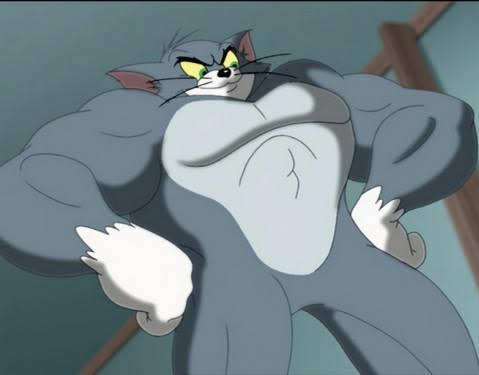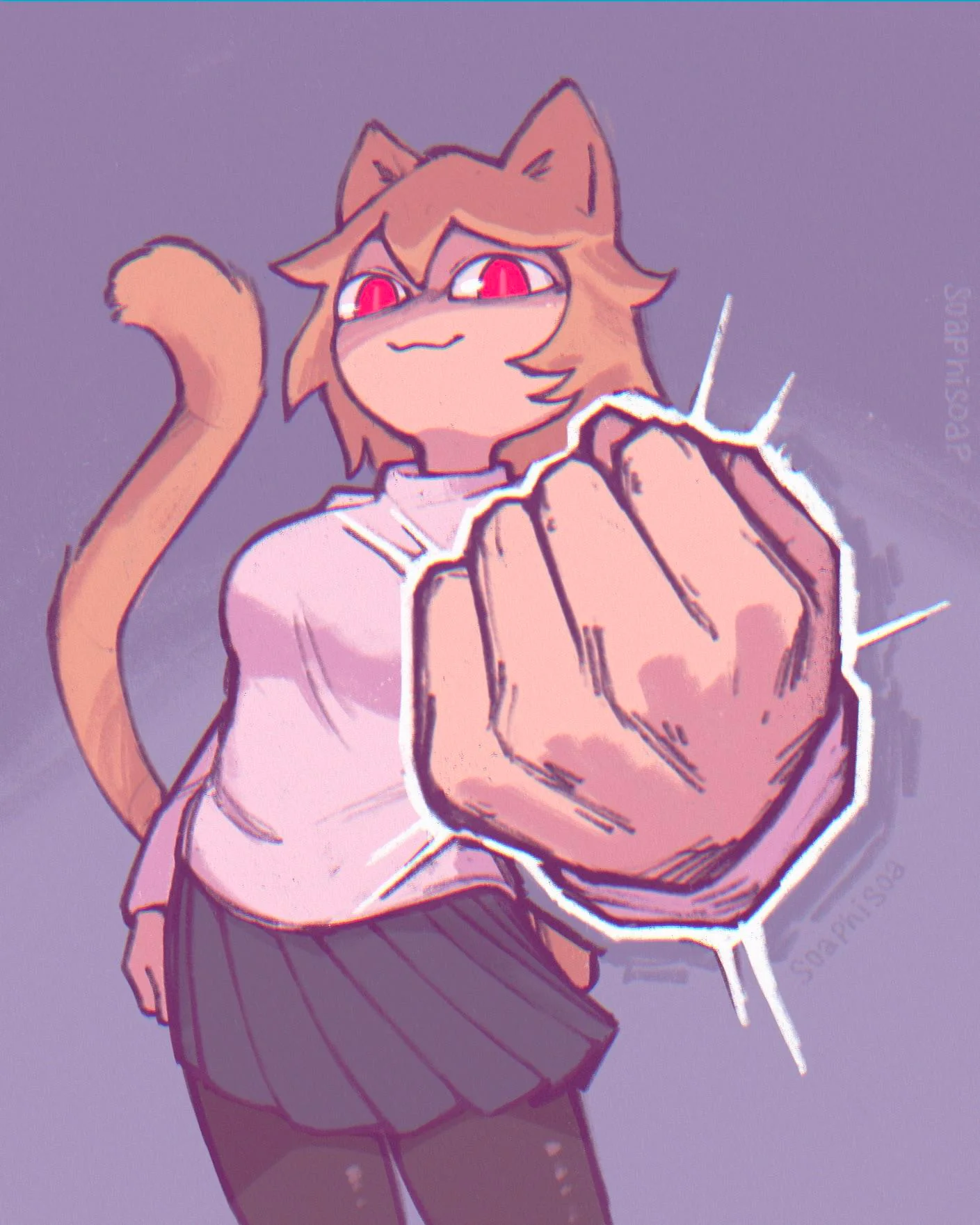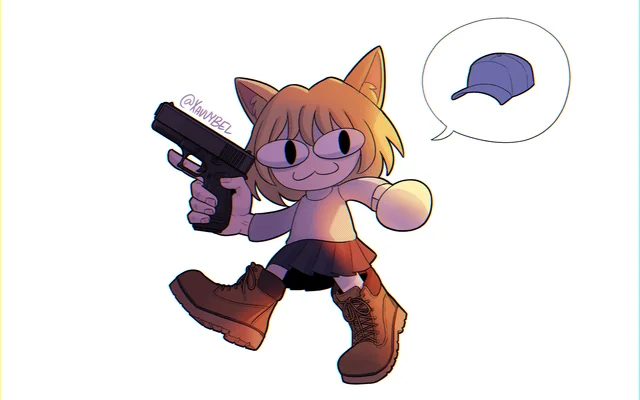An active hunter from Hokkaido was thrown into another world - Chapter 67
- Home
- All
- An active hunter from Hokkaido was thrown into another world
- Chapter 67 - Anti-zombie hunting rifle
Zombies, Shotguns, and Me – Chapters
Chapter 67 Anti-zombie hunting rifle
Back in elementary school, I used to play games at my friend’s house. I used to think shotguns were so cool back then, but when I actually tried using one myself, it turned out to be quite weak…
First of all, the pellets don’t spread out!
I mean, they barely spread out at all!
When you shoot a backshot from about 5 meters away, the holes on the target stay grouped together like a single cluster. In the game, I could easily stop two walking zombies in a row from about 5 meters away. In reality, though, they’d slip through the gap between them. Simultaneous attacks? Impossible.
And the lack of spreading is even more evident when you try shooting flying clays.
You won’t hit a single one. There’s no way you could shoot down clays that don’t spread out as much as they do in the game. If you think clay shooting is as simple as just aiming casually and hitting, you’re way off. It’s not about spreading more pellets either. If they spread too much, the clays will just slip through the gaps in the barrage of pellets.
Even if you manage to hit, it’s usually just one or two pellets. The clay target might split in half and continue flying.
It doesn’t shatter into pieces right away.
Clay shooting is actually quite challenging, to the point where it’s an Olympic sport. Thinking you can easily hit anything with a shotgun is a big misconception.
So, let’s talk about how weak shotguns can be!
I mean, they’re about as effective as using a No. 7 pellet to bring down a bird from 30 meters away. You can actually eat the bird you’ve taken down.
Unlike in games, there’s no chance you’d want to eat something with that kind of power, right? Of course.
And hitting a bird doesn’t make it soar dramatically. In reality, using a BB pellet, a fox might tumble a bit when hit from close range, but even with a backshot, it won’t send a human flying. It’s more like getting punctured and embedded in your body. I once shot members of an Elf abduction gang with a backshot, and while two died instantly and the others were incapacitated, I could let them die from their injuries if I kept my distance. That’s about the extent of the effectiveness of a shotgun’s backshot from a certain distance.
There was a case where a human was shot with a shotgun, Bill Doolin of the Dalton Gang, but I don’t know how far he was shot from. In the autopsy photos, his chest was riddled with pellets. He managed to escape with his gang initially, but he was later found dead, abandoned. So, it seems he didn’t die immediately.
Shotgun shells with pellets come in various sizes and weights, but the amount of gunpowder used is quite similar, so the difference in power isn’t doubled or anything like that.
If the difference were too significant, an automatic shotgun might not function properly.
Each backshot pellet has a diameter of 8.4 mm and weighs only 3.5 grams. With a 3-inch Magnum shotshell, you get 12 pellets.
When you’re 40 meters away and using a cylinder (no choke), you can only fit 2 to 3 pellets in a 30 cm circle.
As the distance increases, the power diminishes quickly.
You really need to engage within 20 meters.
It’s quite scary to think of zombies closing in within 20 meters.
If a human gets hit by a shotgun, even if it’s not fatal, the shock might make them collapse. They’re still alive. Even the American police carry shotguns in their patrol cars for times when they’re outnumbered. It’s the ultimate weapon against humans.
But when your opponent is a zombie, well, they don’t feel pain, so they just keep closing in. You need stopping power.
In such cases, a rifle might be the solution… But then, bolt-action rifles aren’t that quick to fire. Semi-automatic rifles aren’t that powerful.
There are pump-action rifles like the M870 (*1), but hunting rifles usually have a magazine capacity of around 5 rounds, even if they have a higher capacity. Plus, they’re bulky and not easy to reload quickly.
So, what about those beloved M16-series automatic rifles that Americans seem to adore? Well, that’s out of the question.
Their power is just too weak. It’s a .22 caliber, you know? .223 Remington, to be precise.
In Japan, hunting with such low-lethality .22 caliber guns is prohibited. It’s because it only causes injuries to the prey, allowing them to escape, or there’s even a higher risk that the hunter might be attacked by the wounded animal.
I also use a Remington M700 bolt-action rifle chambered in .223 Remington with a varmint rifle for raccoons and foxes. However, its energy is only half that of a .308 Winchester or about the same as a weak shotgun (*2). The gun is heavy, but it has light recoil, making it incredibly easy to shoot. Even elementary school students could manage it. That’s the level of power it has.
Firearms used in warfare aren’t designed with the sole intention of killing.
Inflicting injuries is sufficient. It’s a weapon meant to render the enemy combat ineffective.
You can leave someone behind if they die, but if someone is injured, you can’t just abandon them. Naturally, you’d need two people to carry them, right?
In other words, simply injuring one person can lead to three individuals being removed from the battlefield. When considering war, this is a more cost-effective approach. Even infamous anti-personnel mines are designed to have just enough power to blow off a leg. It’s intentionally calibrated that way.
Half-killing an enemy won’t make them surrender, but if you injure a third of them, they’ll retreat.
This is why small-caliber rifles like the .22 caliber, which can carry plenty of rounds and shoot multiple times like the M16, are valued. The advent of rifles that can be fired in full auto has reinforced this trend.
I wonder how effective those hitmen who use it as a substitute for a sniper rifle really are (*3).
No matter how you justify it, I think using a hunting rifle or a regular sniper rifle would be a better choice.
Anyway, when it comes to shooting zombies, a shotgun loaded with slugs would be more powerful and packs a punch due to its larger caliber.
…
Right, slugs are the way to go.
Yeah, slugs will do just fine.
If we ever end up in a zombie apocalypse, I’ll load lead slugs into my trusty 18-inch smoothbore slug barrel.
A 12-gauge shotgun shell has a diameter of 18.5 mm.
That’s even bigger than a .50 caliber (12.7mm) anti-materiel rifle.
For close-range impact, it should be more powerful than any other weapon.
Yes, that’s the plan.
When I lived in Hokkaido, lead ammunition was banned, you see. So, I’ve actually never shot slugs.
Sabot slugs come in copper. That’s why I used them exclusively.
I’ve heard that there are non-lead slugs available nowadays, though.
While pondering such thoughts, I found myself spending the whole morning shooting an M870 in the outskirts of the elven village, adjusting my distance and changing ammunition against the cliff. The easiest way to gauge accuracy is to shoot into the exposed soil of a gully.
“Shin, lunchtime!”
Saran came over.
“I’ve been calling you for a while now.”
“Sorry, sorry, I had earplugs in.”
Side by side, we sat down and opened our lunchboxes.
It was an elven dish that resembled a folded semicircle, like a small round pizza. Quite delicious. They also brewed barley tea from pot-roasted wheat.
Barley tea is tasty even when it’s warm.
“Saran, do you know about zombies?”
“Yeah.”
Wow, so zombies exist in this world too…
“What are they like?”
“I haven’t seen one. They’re creatures defeated by heroes. When human or other corpses aren’t properly buried and are left alone, demons use them as minions, reanimating the bodies to attack humans.”
“There are demons here!”
That’s a bigger issue!
“They’re referred to as demons or witches, but I’m not sure about that.”
“Sounds like a fairy tale…”
“It’s not a fairy tale. They appear in elven legends too.”
“What’s the story like?”
“Well, it goes something like this…”
Saran stands up, reaching out her hand and rolling her eyes while swaying and playfully uttering “Aah, ooh” as she circles around me unsteadily.
Ahahaha!
As I burst into laughter, Saran joins in with her infectious laughter.
“You know, it’s kinda gross when you think that rotten corpses do this.”
“True. It’s pretty similar to the zombies I know. So, Saran, how would you defeat them?”
“I guess I’d swing a spear and chop off their heads, like, splat-splat.”
So that’s how they go down.
“Stabbing or slashing with a sword doesn’t work because they don’t feel pain.”
I see…
“Do zombies attack humans?”
“Yeah, they try to eat them. People who get bitten and die become zombies.”
“What if they don’t die?”
“They won’t become zombies. Only those killed by zombies turn into them.”
Well, that’s a relief. Imagine turning into a zombie just from a bite – that would lead to a massive outbreak. Whether it’s a disease or virus infection, or even magic spreading, it’s good to know that escape can prevent infection.
“If I get turned into a zombie, will I become one too?”
“If that happens, I’ll become a zombie too.”
“Well, in that case, please just kill me. I really wouldn’t be happy as a zombie.”
“Shin, if I become a zombie, will you kill me?”
“Yeah, I’d kill you while crying. I’ll stay single until I die without remarrying.”
“I see. Well, then I’ll make sure not to become a zombie.”
“Please do, seriously.”
…Yeah, I have to make sure of that.
“Living without you, Saran, would be unbearably painful. But if you died protecting me and became a zombie, I guess I’d have to stay alive or else you’d be mad at me.”
“…Yeah.”
“It’s the same thing. I wouldn’t want you to turn into a zombie if I became one. Please, I’m begging you.”
“Okay.”
Saran seems oddly delighted as she wraps her arms around me from behind and gently sways me side to side. It’s almost like she’s comforting a child…
“Why did we start talking about zombies?”
“Just a feeling, like maybe zombies could be next.”
Well, the goddess did mention some ominous things…
As we discuss potentially ominous developments, we devour our delicious lunch. Surprisingly, even discussing zombies doesn’t seem to dampen our appetites. Ahahaha!
“Today, let’s try changing up our hunting style a bit.”
“Sure.”
Grandpa’s Remington M870, equipped with a 7-round extended tube magazine, an 18-inch smoothbore slug barrel, open sights with a front post and rear notch. No scope.
The tube magazine is actually longer than the barrel now.
Loaded with 7 rounds of Remington’s authentic Sluggers, 12-gauge 3-inch magnum 1-ounce slugs. With 3,005 ft-lbs of energy, it’s more powerful than my .308 Winchester rifle.
It’s highly practical.
From weak clays to robust slugs, the M870’s pump-action mechanism handles them all without a hitch.
“I’ve been relying too much on rifles for an easy hunt. Starting today, I’ll be using this.”
“A shotgun?”
“Yeah. But instead of smaller pellets, it fires a single large ‘slug.'”
“Sounds powerful.”
“Actually, it’s less accurate than a rifle, but at close range, it packs more punch than a rifle.”
“I used to hunt with just a bow and arrows until Shin came along, so I have no complaints.”
“I’ll probably mess up quite a bit. Please bear with me.”
“You’re using that against zombies, right?”
“Yes, it’s also part of my special training.”
“Yeah, Shin, this kind of thing makes you even cooler than using a rifle.”
Shotguns have a bulkier appearance than rifles due to their thicker barrels.
Or maybe it’s because it’s the one I had when we first met.
You might wonder why I’m not using a rifled slug with a saboted projectile.
Well, those are expensive. Three dollars per shot. Besides, when you shoot a rifled slug through a rifle barrel with a backspin, it spins and spreads out due to centrifugal force, making it highly inaccurate.
You may have heard people say that shooting shotgun pellets through a rifled barrel creates a donut-shaped pattern with the center missing. But that’s not true. If you actually shoot them, you’ll realize that while the spread diameter increases by about twice, the distribution remains uniform. It’s just that the resulting pattern becomes abnormally thin, which makes it less practical for real combat situations.
“We can’t switch barrels every time we face an enemy, so from now on, I’ll have to use slugs and buckshot interchangeably with this single barrel.”
With that in mind, in the afternoon, Saran and I tried chasing deer with slugs.
I couldn’t hit anything at all.
Saran successfully brought down a deer with an arrow and gave me a teasing grin.
Grandpa was probably laughing too.
After all, back in Grandpa’s days of hunting with a shotgun, there were no rifled saboted slugs. It’s obvious he hunted with regular slugs.
I still have a long way to go.
――――Author’s Note――――
※1. Pump-Action Rifles
Pump-action rifles were designed by Browning, the inventor of pump-action shotguns, such as the Browning M1890 .22LR rifle. It became a bestseller at the time.
Currently, the Remington M7600 is still in production, with a maximum caliber of .30-06 Springfield. Powerful magnum rounds and the like cannot be used. Unlike the straightforward locking lug mechanism of the M870, these rifles utilize a rotary locking mechanism, making their structure quite complex. To enable barrel cleaning, the barrel is detachable, since integrating it with the receiver would hinder cleaning. As a result, its accuracy inherently lags behind bolt-action rifles, and its power is subpar. The rapid-fire capability of a shotgun is not a sought-after feature in rifles, thus these pump-action rifles lack popularity.
Presently, the only other rifle following this design is the Browning BPS.
By the way, there are those who believe that “Gas-operated rifles lose power compared to bolt-action rifles due to gas pressure.” However, the belief that autos inherently lose power (initial velocity) due to gas operation is entirely untrue. In gas-operated rifles, the gas piston begins moving after the bullet has already left the barrel; gas operation is merely a reuse of wasted energy.
To address any lingering doubts, there have been examples of gas ports being plugged and measured, yet considering the substantial variation in individual bullet velocities, even with measurements of initial velocity, there is little practical difference between auto and non-auto rifles, staying within the margin of error.
※2. .223 Remington Power
Although Shin mistook the compatibility between .223 Remington and 5.56mm NATO and considered them the same, they are distinct. The .223 Remington is marketed for hunting and sports shooting, while the military 5.56mm NATO saw improvements from M16A1 to M16A2, making it about 20% more powerful. They shouldn’t be mixed.
In reality, guns capable of firing only one type wouldn’t sell well to either user group. Thus, in the United States today, most firearms are designed to handle both, making it a non-issue.
Official military firearms, which aren’t commercially available, are designed to use tightly controlled military rounds. Whether commercial ammunition can be fired is uncertain and should be approached with caution. Note this when considering real-world usage.
In rifles, a shorter twist rate (the distance a rifling makes one full rotation) leads to greater resistance, raising chamber pressure, resulting in increased bullet velocity. While .223 Remington has a twist rate of 1:12 inches, the 5.56mm NATO has a tighter 1:7 inches twist rate. Despite shooting 5.56mm NATO in a .223 Remington firearm, it’s claimed that the original bullet velocity won’t be achieved due to this tighter twist rate. In practical terms, there isn’t a significant difference in initial velocity when comparing the two types of ammunition in commercially available firearms.
※3. The Assassin’s Weapon of Choice
Upon starting this serialization, Shin mistook the M16 as a sniper rifle based on the drawings provided as references. It’s a frequently mentioned anecdote that he wasn’t aware it wasn’t a sniper rifle. Despite the growing discomfort regarding the protagonist, a sniper, using a military assault rifle like the M16, the author never changed his favorite weapon. Instead, throughout numerous subsequent episodes, the M16 remained prominent, lending credibility to the character’s reason for choosing it. As a result, even after over fifty years of serialization, the M16 continues to be synonymous with the protagonist, and it remains in use within the US military.
This foresight is remarkable, and the author’s stance of not altering a favored setup is something many authors should learn from.
※4. 1 Ounce (1 oz)
This is a unit of weight equal to 28.3 grams.
In other words, the weight of this slug is 28.3 grams.
In comparison, the .308 Winchester used in rifles weighs around 10-12 grams, making this slug more than twice as heavy. However, its muzzle velocity of 562 m/s is slower than that of a rifle, which is around 800 m/s.
Incidentally, 1 pound is equal to 16 ounces, and 1 pound consists of 7,000 grains.
Grains are commonly used to measure gunpowder quantities and bullet weights.
In the context of guns and gun parts, ounces are used for weight, while pounds are used for energy.
Ounces are also used as a unit of liquid capacity, with differing volumes for water and chemicals.
Furthermore, there are differences between the US and UK systems.
It’s quite impressive how Westerners manage to stay sane with all these variations.
※5. Donut Myth
This misconception is persistent. Even well-known websites, Q&A platforms, and even professional gun store owners often erroneously claim that shooting shotshell in a rifled barrel causes the shot to fly in a donut-shaped pattern, thus missing the intended target. This notion defies physics, as centrifugal force is proportional to the radius of rotation. Projectiles at the center of rotation are not affected by centrifugal force. The idea of donut-shaped patterns implies that greater centrifugal force is applied to bullets at the center, weaker force on the outer edges, which contradicts basic physics principles. However, such occult-like phenomena don’t occur in firearms.
In essence, the notion of shotshell donuts likely stems from a past scenario where someone fired shotshell from a rifled barrel, causing excessive dispersion and missing their target, prompting them to invent such an unusual explanation as an excuse.

































